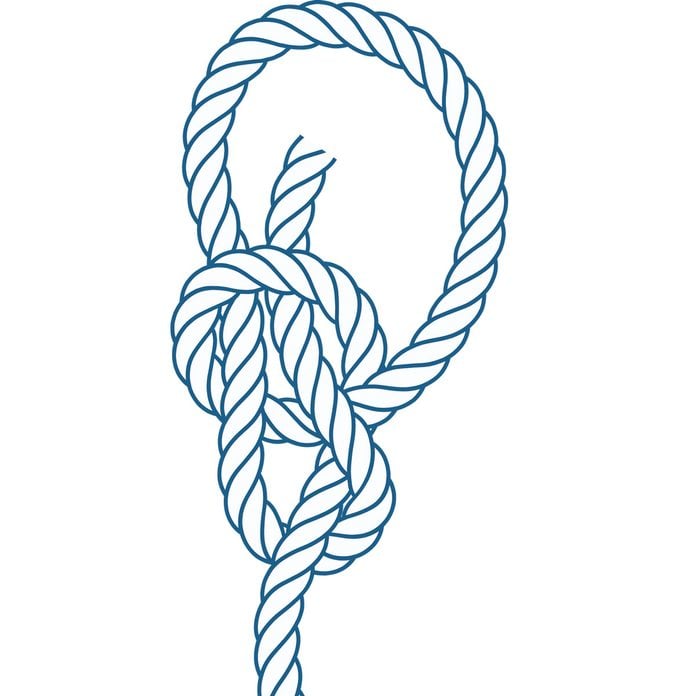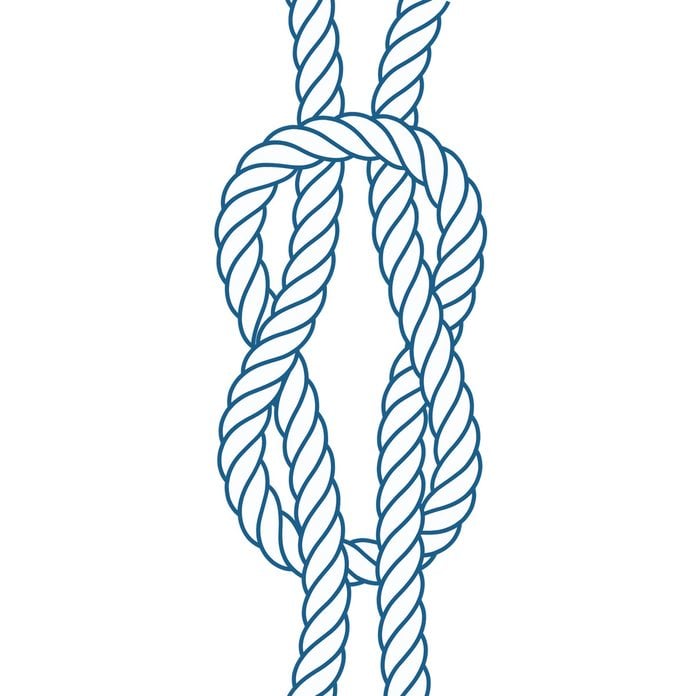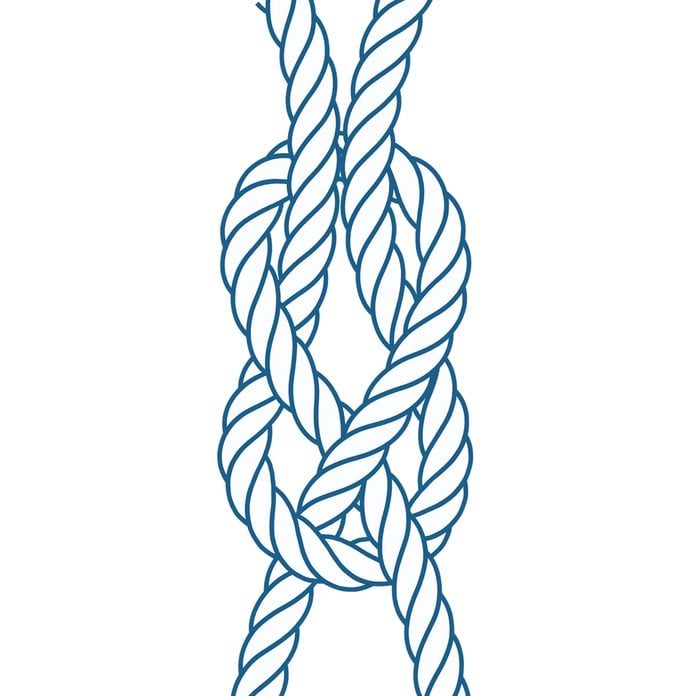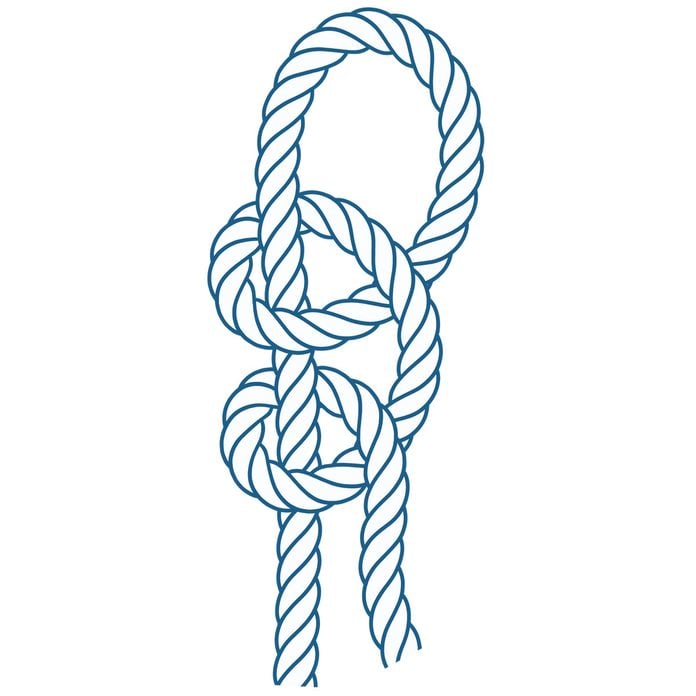
Bowline Knot
Use this knot to tie fixed, super-strong, non-jamming loops. The bowline knot makes a secure loop at the end of a piece of rope. It works best when it’s holding a load, which helps to keep the knot tight and secure. And it has many uses, for example, you can use these rope knots to fasten a mooring line to a ring or a post. Rescue operations use bowline knots in repelling. You can even link two bowlines together to join to pieces of rope.
How to Tie a Bowline Knot
- Make a small loop in the rope.
- Pass the working end up through the loop you just made.
- Pass the working end around the standing end of the rope.
- Then, bring it back down through the loop.
- Pull it tight, and you’re all set.

Figure 8 Knot
A figure 8 is used when you need a stop knot on the end of a rope or a non-jamming loop in the middle of a rope. Additionally, these knots provide a quick and convenient stopper knot to prevent a line sliding out of sight, which can be used for up inside the mast of a sail boat. This is an essential knot for climbing too, tied to prevent ropes from slipping through carabiners or other retaining devices.
How to Tie a Figure 8 Knot
- Make a loop with your rope.
- Pass the working end through it.
- Pull both ends to adjust the knot as needed.

Square Knot
The square knot is used when you need to join two similar ropes together to make one long rope. These rope knots have many uses but not where safety is critical. For example, you can tie a sail cover over a sail with a square knot. Also, you can tie the string on a gift or to tie the laces on your shoes.
How to Tie a Square Knot
- Hold one end of a rope in one hand, and the end of the other rope in your other hand.
- Take the right end, and pass it over and under the end in your left hand.
- Do the same with the rope in your left hand, pass it over and under the rope you’re holding with your right hand.
- Tighten it by pulling both ends of the knot at the same time.

Sheet Bend Knot
These knots are recommended for joining two ropes of unequal diameters. This type of knot works equally well if the ropes are of the same size too. For more security, you can use a doubled version of it.
How to Tie a Sheet Bend Knot
- Form a small loop with the end of the thicker rope.
- Take the end of the smaller rope and pass it through the loop, around both parts of the thicker rope and back under itself.
- Pull both ends to tighten it.

Double Half Hitch Knot
Half hitches are for tying boats to piers, setting up a tent by tying lines to stakes and for many other uses.
How to Tie a Double Half Hitch
- Take the end of the rope and pass it around the pole, stake or whatever you’re tying it to.
- Next, pass the rope under the standing part of the rope.
- Bring the end through the loop you just made and tighten it. That’s the half hitch.
- Bring the end around the standing end of rope and back through the loop you just made, creating another half hitch to complete the knot.
